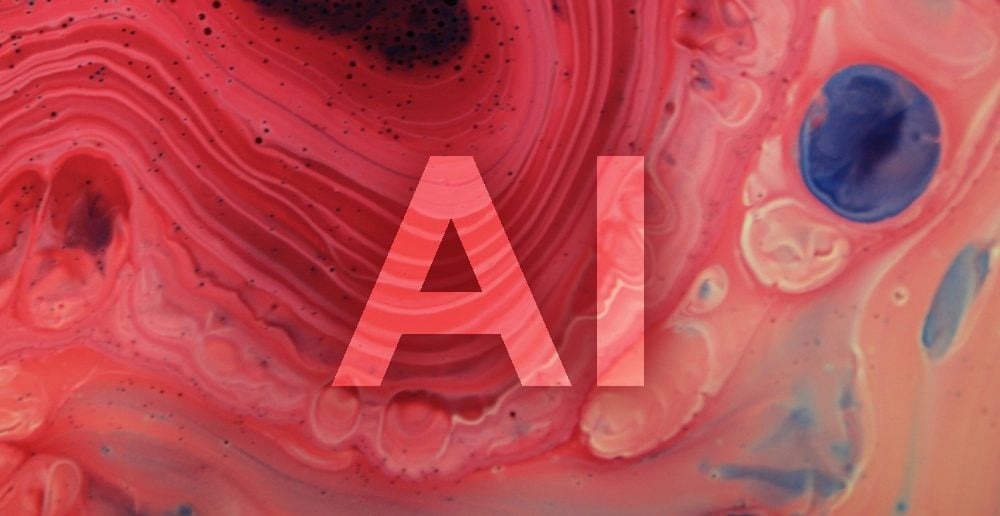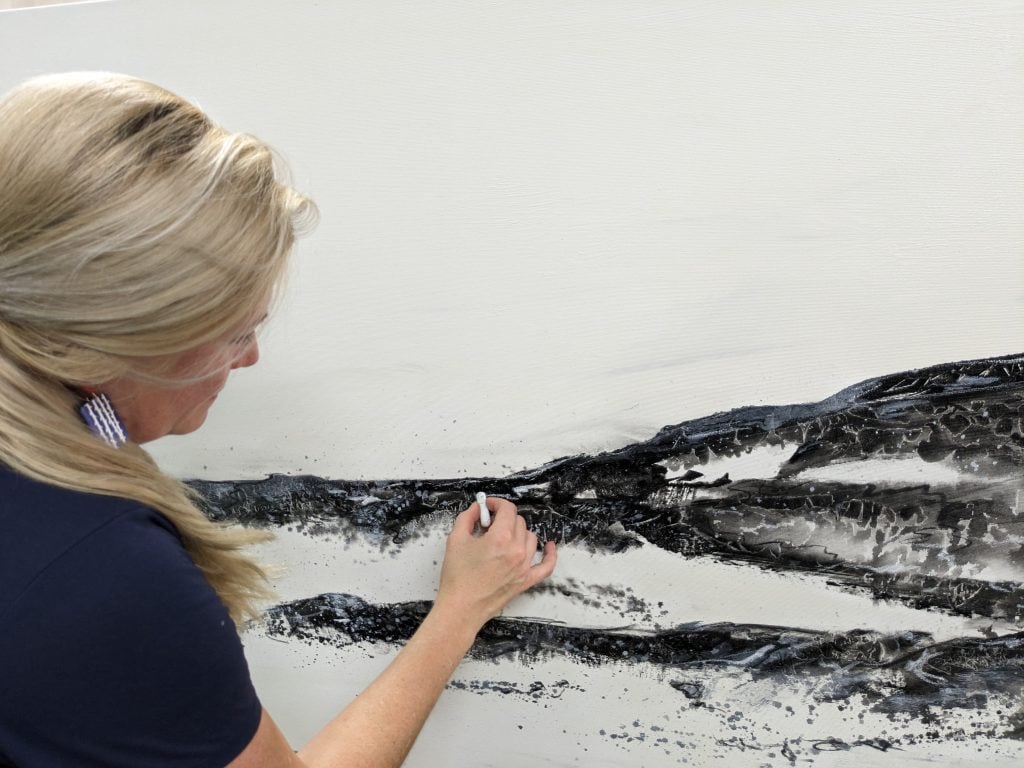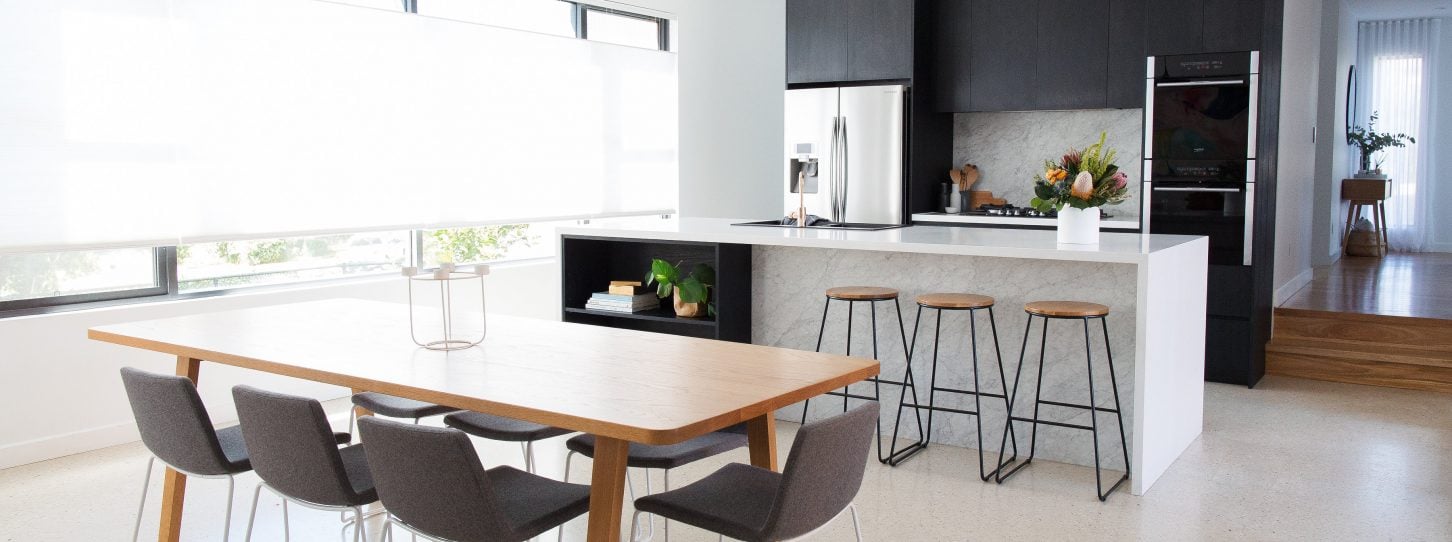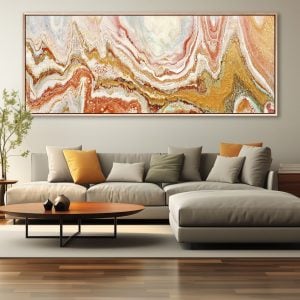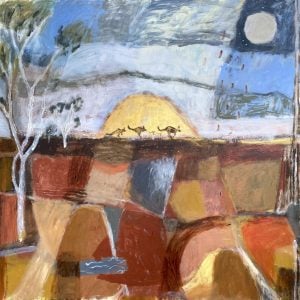How AI is Shaping the Future of Visual Arts
Artificial intelligence is a hot topic in the world right now. While many are excited about the transformative benefits AI might offer, others are concerned about its potential to disrupt and diminish the human experience, raising profound questions about our future.
This dichotomy is true in the art world too, where a sense of unease about AI’s potential impact on the livelihood of artists is laced with curiosity about how it might boost creative processes and move the art landscape forward.
Bluethumb exists to help artists make a living through the sale of handmade original art in Australia’s primary art market. We are committed to supporting genuine artists who create authentic art, which is why we don’t sell AI-generated works on our platform.
We recognise, however, that AI is an integral part of our industry’s future, and we believe it’s important to explore and understand its impact more deeply.
So, we turned to our community of visual artists and collectors to hear their thoughts. In two separate surveys, we asked how they feel about AI and how they think it might change how art is made and traded in the future.
We received an impressive 1,500 responses from 650 collectors and 850 artists – potentially the largest response to a survey of this kind in Australia.
The responses revealed a clear consensus from both artists and buyers regarding AI in art. Both groups are questioning the value of AI-generated works—whether in their creation or sale—and are calling for greater transparency about the use of AI tools in the art-making process.
Above all, they told us that Aussies care about how AI changes the paradigm for artists and the art market.
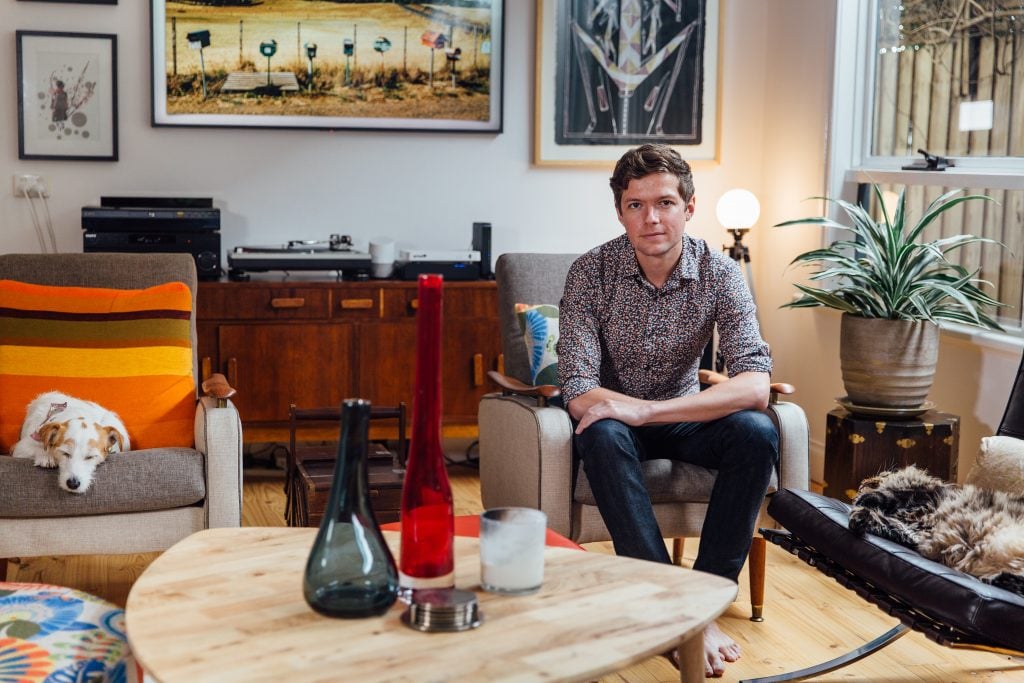
Freddy Grant’s home is a true art haven, showcasing a curated collection that reflects his deep appreciation for creativity and passion for Bluethumb.
The Consumer View
Our data shows that consumers are overwhelmingly in favour of artists making real art.
“There’s something soulless about AI art and lots of issues with copyright. What’s important to me is connecting with artists and supporting them – I’d prefer to know that I’ve bought from an artist who has created their work themselves rather than using AI.”
– Freddy Grant, Bluethumb art collector
Disclosure is extremely important to respondents, with 95.4% stating they want to know if an artwork they were buying was created using AI tools.
For similar reasons, a large majority (80%) would inform their friends if an artwork they purchased was made with AI. It appears that keeping AI use hidden is not the desired trend – both in creating and displaying art.
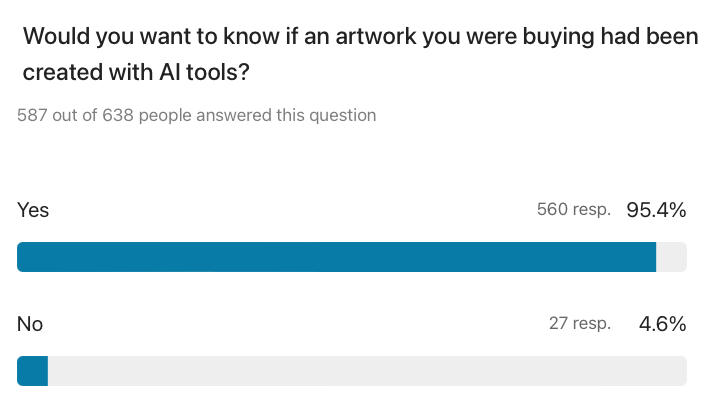
Interestingly, we also found out that buyers are not swayed by cost when it comes to AI-generated art. In fact, AII art with a lower price tag will not entice 88.1% of buyers to buy AI art. Handmade art continues to hold its value, even as the means of making and accessing art become more widespread and easier.
Like many visual artists, consumers are concerned about AI’s negative impact on artist rights. Nearly 90% cited issues such as a lack of soul in AI artworks, the secrecy surrounding AI, and the potential for AI to copy artists’ styles, affecting their ability to earn a living.
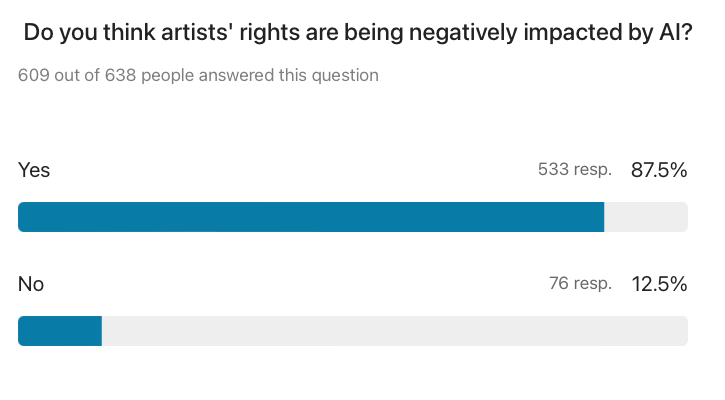
Handmade pieces remain the preference when choosing art, with AI-generated art not yet a priority for buyers.
“The value of an artwork often depends on the artist’s process and the meaning behind it. AI art can be skillful and meaningful, but I can’t see myself buying it anytime soon.”
–Freddy Grant, Bluethumb art collector
The Artist View
When it came to our artist survey, the results echoed the sentiments of Australian consumers.
One of the most interesting findings confirms what public discourse around AI and art has suggested: artists feel under siege by AI. Our data reveals that 73% think AI poses a threat to the art world.
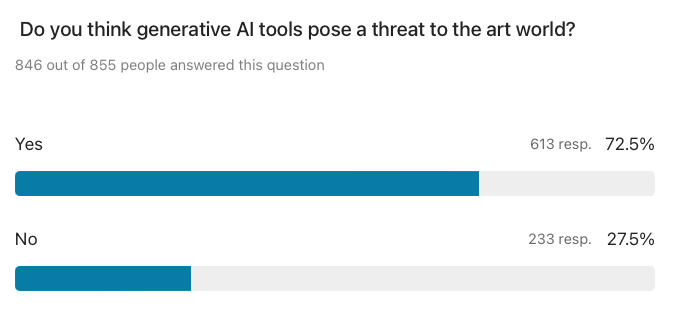
In response to these concerns, 91% of respondents believe it is crucial to disclose when art is created using AI tools.
“AI in art is a response to our fast-paced consumerist world – but while the magic of the tech is fascinating, the actual ‘artwork’ isn’t authentic. What hasn’t changed is the idea of perceived value, which is still very much in the hand-made original art space.”
– Laurie Franklin, Melbourne-based Bluethumb artist
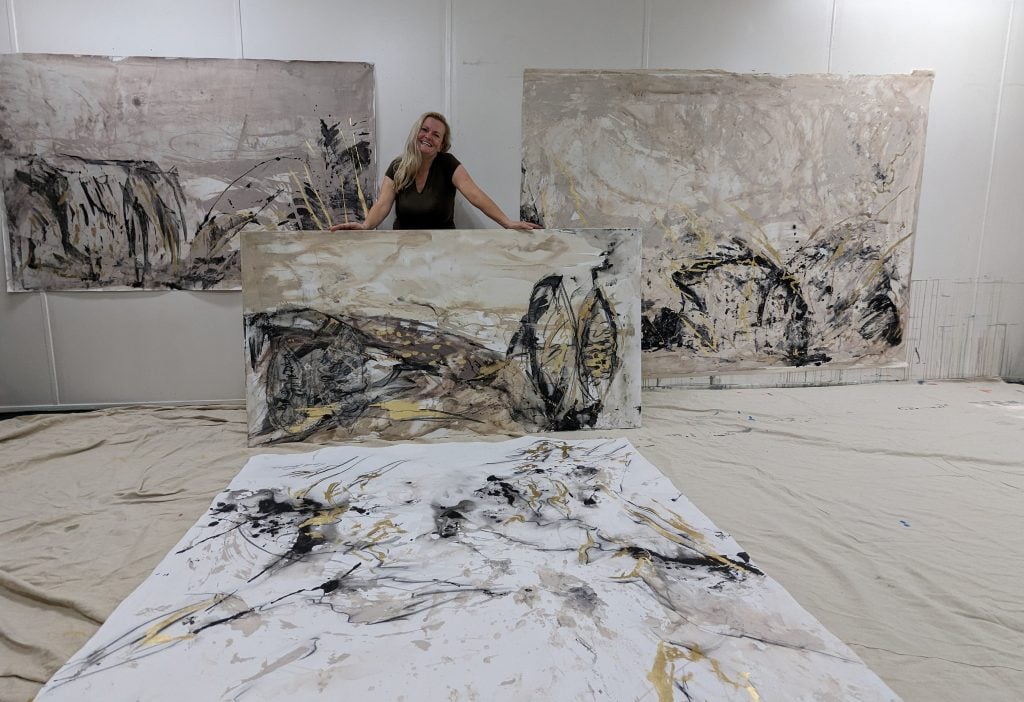
Melbourne-based artist Laurie Franklin has been a member of Bluethumb’s online art gallery since 2016.
Artists are continuing to prioritise the mastery and delivery of hand-made work over experimentation with AI technologies. A majority of respondents said they don’t use AI-generative tools, and while over half are curious about how AI can help their art practice, most do not see it as beneficial to their creative output.
Interestingly, only half of the respondents said they were concerned that their work would be used to train AI models, possibly indicating a feeling of confidence in their own intellectual property. However, concern about their work being copied rose to 65%.
Worth noting too, there are artists within our cohort who are experimenting with generative AI tools as part of their creative process, but this is less than the 70% who said they never use the technology for this purpose. They were also evenly split between unsure and certain that AI use in the creative process would be inevitable in the future.
The results of our artist survey show that Australia’s visual artists have deep concerns about AI’s impact on their livelihoods, coupled with a strong resolve to preserve the value and appeal of authentic, hand-crafted art by continuing to champion the irreplaceability of human expression.
Overall, this group of respondents expressed concerns about the impact of AI on their livelihoods and showed commitment to maintaining the value and appeal of authentic, hand-made art.
“As an artist I keep tabs on AI to find out where it’s going and what my best line of defence is. As an artist community, that is what we owe to ourselves and our collectors.”
– Laurie Franklin, Melbourne-based Bluethumb artist
What Next?
The wide engagement with our surveys demonstrates the growing awareness of AI on both sides of the art market.
It’s fair to say that AI-generated art tools will continue to change the art landscape and raise questions around what it means to be an artist. Equally, AI use in art-making will have implications for how art is valued in the future, with the potential to impact art market dynamics and attitudes towards creativity.
Artists are increasingly confronted with AI tools capable of copying and reproducing their work, and the lack of transparency in how these tools are developed fuels distrust and fear. As AI technology advances, it will be crucial to balance innovation with authenticity to preserve the integrity of the arts sector and protect the rights of Australia’s visual artists.
In summary, whether we are the ones who are making the art or those who are supporting artists by buying their work, we think it’s worth staying abreast of the developments in this space.
And Bluethumb will continue to support human artists creating genuine and showcasing only authentic, original artworks in our marketplace.
Support human creativity! Discover unique, hand-crafted pieces by over 20,000 artists on Bluethumb.

